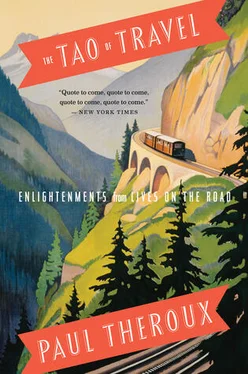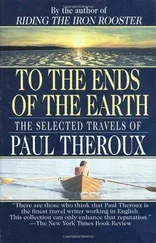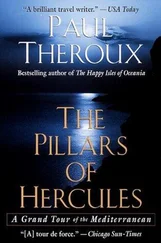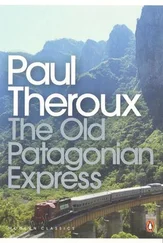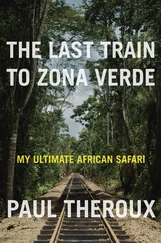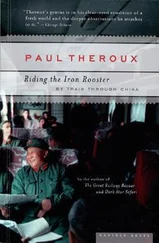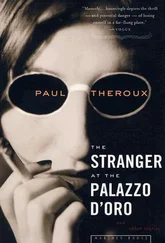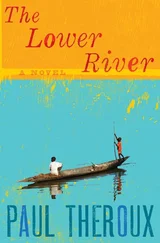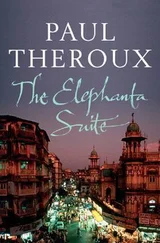W. Somerset Maugham in Burma: For The Gentleman in the Parlour, twenty-three days to Keng Tung, a few weeks more in Bangkok, but the whole trip, around the world from London, door to door, took nine months in 1922 and 1923.
Edward Abbey: About nine months, for Desert Solitaire: A Season in the Wilderness (1968). Not one season but two, in 1956 and 1957, "with adventures from in 1950, 1959 and 1965" (James Cahalan, EdwardAbbey, 2001).
V. S. Naipaul in India: Nine months, for An Area of Darkness: An Experience of India, in which the Trinidad-born author, on his first-ever, 1962 trip to India, understands that he has no place in what he calls "the total Indian negation" and reasserts his feeling of "my own homelessness." He is frequently angry in the book, sometimes enraged, a condition he analyzes after losing his temper. "It was brutal; it was ludicrous; it was pointless and infantile. But the moment of anger is a moment of exalted, shrinking lucidity, from which recovery is slow and shattering."
Richard Burton in Salt Lake City: About three weeks, though his entire North American trip took more than eight months. In Utah he wrote to a friend, "I'm traveling for my health which has suffered in Africa, enjoying the pure air of the prairies, and expecting to return in a state of renovation." Burton had sailed for Canada in April 1860, and after traveling across the United States by stagecoach and on horseback, he arrived in Salt Lake City toward the end of August. He wanted to know about Mormonism, particularly the practice of keeping plural wives. To this end, he spent time with Brigham Young, who had forty-nine wives at the time Burton met him. Burton had studied the practice of polygamy on his first trip to Africa and reached the conclusion that in countries where children had value and were a form of wealth, polygamy made sense. But he wrote in The City of the Saints (1861) that in the United States, "where the sexes are nearly equal, and where reproduction becomes a minor duty," it was inadvisable. His main objection to polygamy was that it was unromantic, merely an "unimpassioned domestic attachment." He went on, "Romance and reverence are transferred from Love and Liberty to Religion and the Church."
Joseph Conrad in the Congo: Six months in 1890, including twenty-eight days on the Congo River. Eventually this one-month river trip (published after his death as Congo Diary) would form the basis of the brilliant and evocative novella Heart of Darkness, which he wrote eight years after returning from the Congo, describing it as "experience pushed a little (and only very little) beyond the actual facts of the case."
Rebecca West in Yugoslavia: Three fairly short trips, about five months altogether. The first was on a British Council grant in the spring of 1936, but she was ill much of the time; then in spring 1937 for a few months, and a month in the early summer of 1938. The result was the 500,000-word Black Lamb and Grey Falcon (1941), regarded as the apotheosis of travel writing and self-analysis. One of my favorite passages, from the Epilogue, shows that a travel book can include anything, including — as here — an analysis of the divided self:
Only part of us is sane: only part of us loves pleasure and the longer day of happiness, wants to live to our nineties and die in peace, in a house that we built, that shall shelter those who come after us. The other half is nearly mad. It prefers the disagreeable to the agreeable, loves pain and its darker night despair, and wants to die in a catastrophe that will set back life to its beginnings and leave nothing of our house save its blackened foundations. Our bright natures fight in us with this yeasty darkness, and neither part is commonly quite victorious, for we are divided against ourselves and will not let either part be destroyed. This fight can be observed constantly in our personal lives. There is nothing rarer than a man who can be trusted never to throw away happiness, however eagerly he sometimes grasps it. In history we are as frequently interested in our own doom… We ignore this suicidal strain in history because we are consistently bad artists when we paint ourselves, when we prettify our wills and pretend they are not parti-colored before the Lord.
Geoffrey Moorhouse in the Sahara: For The Fearful Void, four and a half months in 1972, traveling 3,600 miles, mainly on foot.
In an interview, Moorhouse said, "One reason I did this book is that all the books I've read about rough journeys, from Fuchs's Crossing of Antarctica to Thesiger's Arabian Sands, do tend to exclude the soft, weak, feeble, nasty sides we all have. They all seem to be bloody supermen. You think, Didn't they ever cry, or do something really shitty? As far as I can see, I'm a pretty ordinary bloke, and either they're very different from me, or they're excluding a part of themselves."
Bruce Chatwin: For In Patagonia (1977), four months, from mid-December 1974 to April 1975 (see Chapter 13, "It Is Solved by Walking").
Anton Chekhov in Sakhalin: Three and a half months in 1890, but the book, Sakhakin Island (translated by Brian Reeve), took him three years to write. He traveled from Moscow, by river steamer and horse-drawn coach, noting, "The Siberian highway is the longest, and, I should think, the ugliest road on earth." In an ingenious manner for a travel writer, to find out as much as he could about this remote penal settlement and this island of exile, he carried out his own detailed census, using a printed questionnaire.
"I am profoundly convinced that in fifty to a hundred years' time," he wrote, "they will regard the lifelong character of our penalties [exile, forced labor] with the same perplexity and sense of embarrassment with which we now look upon the slitting of nostrils or the amputation of fingers from the left hand."
And yet a hundred years after he wrote this, the Soviet government was exiling political prisoners to life sentences in the gulag and using them as forced labor. Russians on the outside were neither perplexed nor embarrassed, only afraid. I wrote about one of these prisons in Ghost Train to the Eastern Star, when I visited Perm 36. The prison was closed in 1992, a century after Chekhov's stay in Sakhalin.
The people who showed me around this prison in 2007, who knew it in its bad days, would have agreed with Chekhov's verdict in the Sakhalin settlement of Derbinskoye: "There were moments when it seemed to me that I was seeing the extreme and utmost degree of human degradation, lower than which it is simply impossible to go."
Ernest Hemingway in Africa: A little over three months, later writing The Green Hills of Africa. Hemingway reached Mombasa on December 6, 1933, and after his safari and travels upcountry, left there in early March 1934.
W. H. Auden in Iceland: Three summer months in 1936, resulting in Letters from Iceland (1937), which he wrote with the poet Louis MacNeice, who spent one month there, liked the horseback rides, but hated the dried fish: "The tougher kind tastes like toe-nails, and the softer kind like the skin off the soles of one's feet." Because the book is more a scrapbook than a travel narrative, it is a mixture of poetic styles and observations.
William Least Heat-Moon: Three months (March-June 1978), 13,000 miles, on the back roads of America for Blue Highways. Before he set off he had an epiphany: "That night, as I lay wondering whether I would get sleep or explosion, I got the idea instead. A man who couldn't make things go right could at least go. He could quit trying to get out of the way of life. Chuck routine. Live the real jeopardy of circumstance. It was a question of dignity."
Читать дальше
